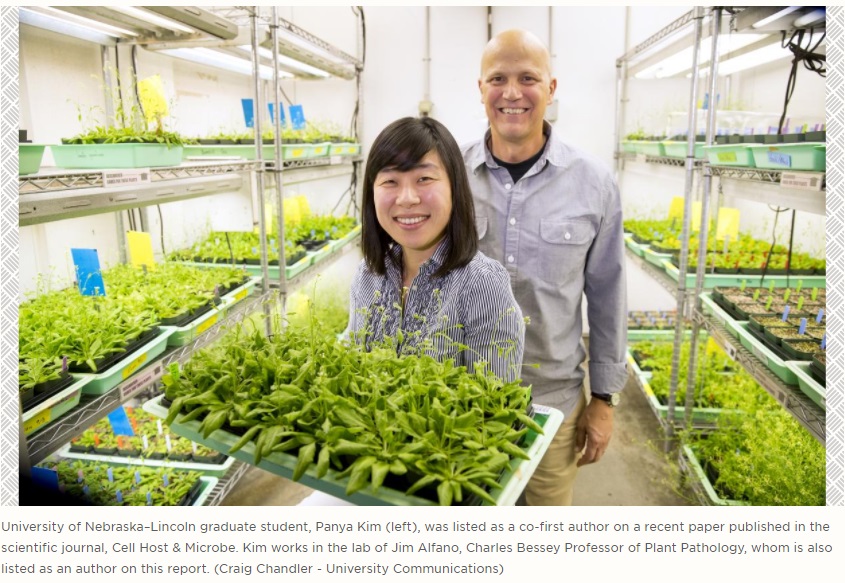
Lincoln, Neb. — In a paper published Oct. 12 in the scientific journal, Cell Host & Microbe, University of Nebraska–Lincoln graduate student and co-first author, Panya Kim, concludes that destruction of a plant immune co-receptor by an effector injected into plant cells by the pathogen Pseudomonas syringaedampens plant immunity.
The study reveals a virulence strategy by which a plant pathogen effector suppresses the plant immune system by attacking the receptors that are needed to turn on the plant immune response.
HopB1 is a type III effector found in P. syringae, which is injected into plant cells to suppress the plant immune system. A team of researchers in China collaborated with Kim to identify the plant targets of HopB1. Kim works in the lab of Jim Alfano, Charles Bessey Professor of Plant Pathology, whom is also listed as an author on this report.
“Collaborations in science are increasingly important, and we were pleased to work with a well-established lab in China for this study,” said Alfano. “Panya Kim worked extremely hard on this research so I am happy she is being recognized for it as a co-first author on this paper.”
Specifically, the authors wanted to examine what happened to the plant immune system when HopB1 is injected into plant cells. They found that it interacts with BAK1, an immune co-receptor in the Arabidopsis plant that is needed by several immune receptors for the immune system to be activated against pathogens.
The research team found that HopB1 enhances virulence of the pathogen. At initial injection and prior to immunity activation, HopB1 interacts with the immune receptor FLS2. When a bacterial pathogen is present, FLS2 binds to flagellin triggering BAK1 to bind to FLS2 normally, inducing the plant immune response.
However, when HopB1 is present, it cleaves and destroys BAK1 when BAK1 interacts with FLS2 upon activation of plant immunity. This occurs because BAK1 gets in close proximity to HopB1. Destroying BAK1 prevents FLS2 from activating plant defenses. HopB1 can no longer contribute to virulence in a plant that expresses a BAK1 mutant derivative that is resistant to cleavage by HopB1, indicating that BAK1 is a primary virulence target of HopB1.
The study was initiated by Lei Li, Liping Yu and Jian-Min Zhou of the Chinese Academy of Sciences in Beijing, China. Gaihong Cai and Che Chen of the National Institute of Biological Sciences in Beijing also contributed to the study.
Complete research findings can be found in Volume 20, Issue 4 of Cell Host & Microbe, a leading scientific research journal publishing novel findings related to microbes.
Contact:Jim Alfano
Charles Bessey Professor of Plant Pathology
Department of Plant Pathology
Center for Plant Science Innovation
402-472-0395
jalfano2@unl.edu